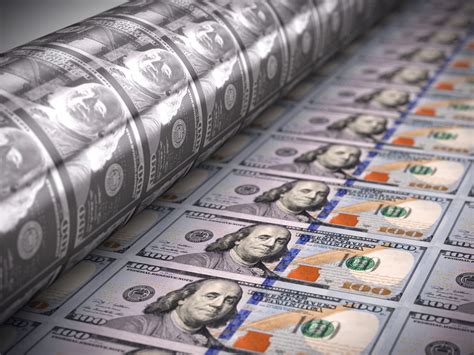Understanding the Urgency of High-Interest Debt
High-interest credit card debt is a silent killer of financial aspirations, often trapping individuals in a cycle of minimum payments that barely scratch the surface of the principal. For men striving for financial independence and security, confronting this debt with an aggressive strategy is not just smart; it’s essential for building a foundation of true financial freedom. This isn’t about mere debt repayment; it’s about reclaiming control, building wealth, and paving the way for future opportunities.
The insidious nature of high interest means that a significant portion of your hard-earned money is wasted on interest charges, rather than reducing your actual debt. This siphons away funds that could be invested, saved, or used to improve your quality of life. The longer this debt persists, the more expensive and debilitating it becomes, making aggressive action not just a preference, but a necessity.

The Aggressive Mindset: Why Speed Matters
Aggressively paying down debt requires more than just a plan; it demands a shift in mindset. It means viewing debt as an emergency that needs immediate, decisive action. Think of it like a financial fire – you wouldn’t just observe it; you’d douse it with every resource you have. This mindset emphasizes speed because every day your high-interest debt lingers, it costs you money. The sooner it’s gone, the more you save and the quicker you can pivot to building wealth.
Embracing this aggressive approach means being willing to make temporary sacrifices for long-term gain. It’s about prioritizing debt elimination above almost everything else, understanding that the discipline applied now will yield immense benefits in the future. This commitment is the bedrock upon which all successful aggressive debt payoff strategies are built.
Core Strategies for Rapid Debt Reduction
1. The Debt Avalanche Method: Targeting Interest
While the debt snowball method (paying off smallest balances first for psychological wins) has its merits, the aggressive approach for high-interest debt prioritizes the Debt Avalanche. This method involves listing all your debts from highest interest rate to lowest. You make minimum payments on all debts except the one with the highest interest rate, towards which you direct every extra dollar you can find. Once that debt is paid off, you take the money you were paying on it (minimum payment + extra payments) and apply it to the next debt on your list with the highest interest rate.
This strategy saves you the most money on interest charges over time and is mathematically the most efficient way to clear debt. It requires discipline, but the financial rewards are significant.

2. Extreme Budgeting and Expense Cutting
Aggressive debt payoff demands an aggressive budget. This isn’t about minor adjustments; it’s about dissecting every expense and ruthlessly cutting anything that isn’t essential. Review your bank statements and credit card bills for the last few months. Categorize every single expenditure:
- Non-Negotiables: Housing, utilities, basic groceries, transportation to work.
- Negotiables: Subscriptions (streaming, gym), dining out, entertainment, impulse buys, branded items.
The goal is to free up as much cash as possible to throw at your debt. Consider temporary sacrifices like cooking all meals at home, canceling non-essential subscriptions, postponing vacations, and finding cheaper alternatives for daily necessities. Every dollar saved is a dollar that pays down debt.
3. Boosting Your Income Aggressively
While cutting expenses is crucial, there’s a limit to how much you can cut. There’s no limit to how much you can earn. To accelerate your debt repayment, look for ways to increase your income:
- Side Hustles: Freelancing, ridesharing, delivery services, tutoring, consulting, odd jobs – anything that generates extra cash.
- Overtime: If your job offers overtime, seize the opportunity. Every extra hour worked translates directly into more debt payment.
- Selling Assets: Have unused items lying around? Furniture, electronics, collectibles, even a second car? Sell them. Convert clutter into cash for debt.
- Negotiate a Raise: If you’ve been a valuable employee, prepare your case and ask for a salary increase.

4. Strategic Debt Consolidation or Balance Transfers
While not a magic bullet, strategic debt consolidation or a balance transfer can be an aggressive tool if used correctly. A 0% APR balance transfer credit card can give you a window (typically 12-18 months) to pay down debt without accruing interest, provided you qualify and can pay off the transferred balance before the promotional period ends. Be wary of transfer fees and have a concrete plan to eliminate the debt within the promotional window, otherwise, the deferred interest can hit hard.
Similarly, a personal loan with a lower, fixed interest rate can consolidate multiple high-interest credit card debts into one manageable payment. This simplifies repayment and often reduces the total interest paid. However, it’s crucial not to incur new credit card debt while paying off the consolidated loan.
5. Negotiating with Creditors
Don’t be afraid to pick up the phone. Many credit card companies are willing to work with you, especially if you have a good payment history or are facing hardship. You can negotiate for a lower interest rate, a reduced monthly payment, or even a temporary hardship program. Explain your situation clearly and express your commitment to paying off the debt. A lower interest rate means more of your payment goes towards the principal, accelerating your payoff.

Maintaining Momentum and Preventing Recurrence
Once you start making progress, the psychological boost can be powerful. Maintain that momentum by regularly tracking your progress, celebrating milestones (even small ones), and visualizing your debt-free future. To prevent falling back into debt:
- Build an Emergency Fund: Once the high-interest debt is gone, redirect your aggressive payments to building a robust emergency fund (3-6 months of living expenses). This prevents new debt from forming due to unexpected expenses.
- Budget for ‘Fun’: Once debt-free, allocate a small percentage of your income for discretionary spending, but stick to it.
- Financial Literacy: Continue to educate yourself on personal finance, investing, and wealth building.

The Path to True Financial Freedom
Aggressively paying down high-interest credit card debt is a challenging but incredibly rewarding endeavor. It requires discipline, sacrifice, and a clear vision of your financial future. By adopting an aggressive mindset, leveraging smart strategies like the debt avalanche, cutting expenses ruthlessly, boosting your income, and exploring consolidation options, men can swiftly dismantle their debt burdens. This isn’t just about clearing balances; it’s about building resilience, fostering financial discipline, and ultimately, unlocking the door to lasting financial freedom, where your money works for you, not against you.




